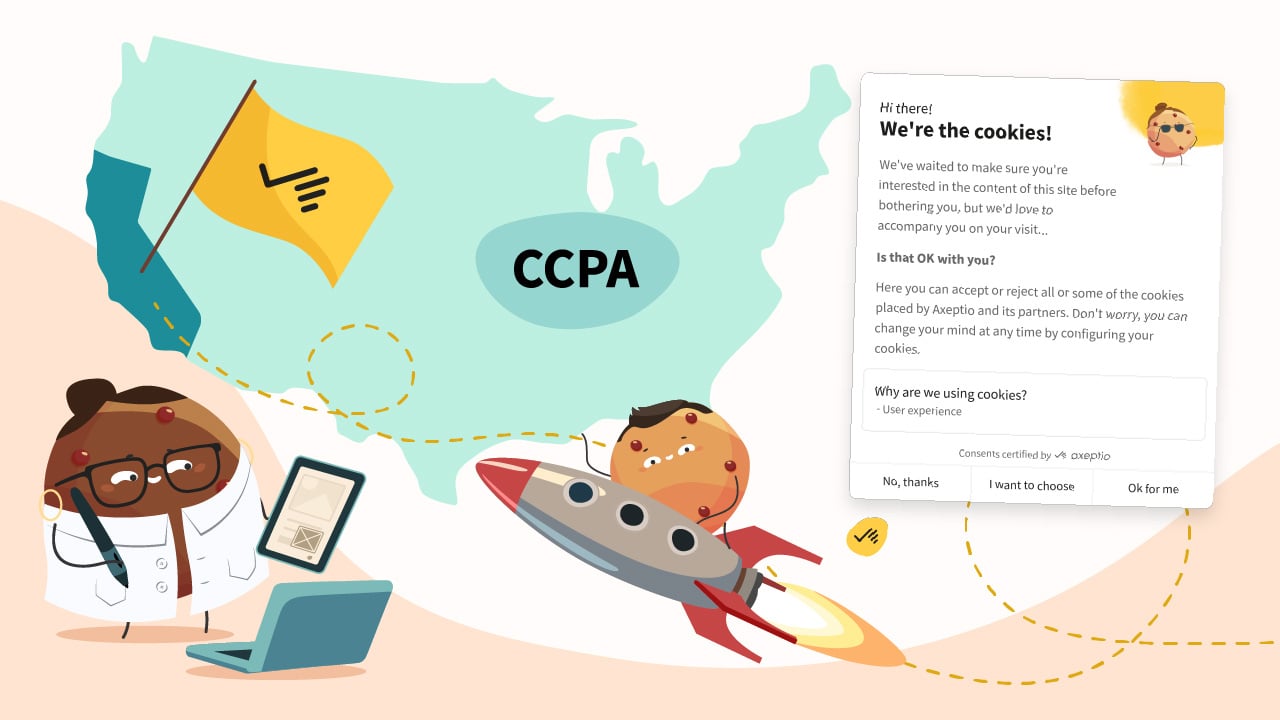Just over a year ago, Google rolled out Consent Mode v2, a move that coincided with the countdown to the Digital Markets Act (DMA) shaking up the rules of digital marketing in Europe. Since then, consent management has evolved from a compliance checkbox into the backbone of audience tracking and modeling strategies.
One year in, what lessons have we learned? What are the emerging AdTech trends tied to this shift? And how does Axeptio help businesses navigate the transition to Consent Mode v2? Here's what we’ve uncovered.

What is Google Consent Mode v2, and Why Does It Matter?
At its core, Google Consent Mode v2 acts as a bridge between users’ consent choices and the platforms marketers rely on most — Google Analytics and Google Ads. Depending on what users allow, Consent Mode v2 passes the appropriate signals to Google’s tools, ensuring that data is handled accordingly. When consent is denied, a chunk of user behavior data simply vanishes, leaving marketers with partial visibility.
That’s where modeling steps in. With Consent Mode v2, Google estimates missing data and conversions by extrapolating from the behavior of consenting users. It’s a statistical balancing act — the more reliable the dataset is, the better the extrapolation will be. And while it doesn’t fully restore visibility, it helps mitigate the impact of data loss.
On a regulatory front, Consent Mode v2 is Google’s compliant answer to new EU standards. As a reminder, on July 3, 2023, the European Commission officially labeled several platforms — including Google — as “gatekeepers” under the DMA. As of March 6, 2024, these players were required to collect data only after obtaining explicit consent.
How to Implement Consent Mode v2?
It all starts with a CMP — a Consent Management Platform — that captures user choices via a cookie banner. On the tag side, Consent Mode v2 introduces two new parameters:
- Ad Personalization: indicates whether personalized ads are allowed.
- Ad User Data: determines whether user data can be shared with Google for targeting purposes.
These additions complement the two existing settings — Analytics Storage and Ad Storage — which control how audience measurement and advertising data are stored. Together, these four parameters offer more granular control over data collection, and most importantly, compliance.
Once user consent is logged, the CMP sends signals to Google via Consent Mode v2, triggering or disabling tags accordingly.
Axeptio supports businesses in setting up Consent Mode v2 with two turnkey integration modes:
- Basic Mode: No tags fire, and no data is stored, read, or shared before consent is granted.
- Advanced Mode: Tags still don’t activate pre-consent, but anonymized signals (such as URL, browser type, etc.) are sent to Google, enabling behavior modeling even when users opt out.
Better yet, the Axeptio CMP simplifies the rollout process thanks to its Gold status in Google’s CMP Partner Program.

Do you want to find out more about the successful integration of Consent Mode v2 with Axeptio? Here's a case study featuring Gîtes de France® Corse.
One Year In: No Data, No Modeling
Over time, one truth has become abundantly clear: No consent means no data — and no data means no modeling.
“As far as Google Ads is concerned, this shift has direct consequences. A drop in available data can erode targeting precision and campaign ROI. That’s the core logic behind Consent Mode: the more users opt in, the better the modeling gets. The consenting cohort becomes the foundation for the entire system.” explains Jean Decherf.
This marks a fundamental shift in digital strategy. The days of fully exhaustive datasets are over. From now on, decisions will be made based on a subset of user behavior. The challenge lies in extracting reliable insights from incomplete — but intelligently modeled — data.
In this context, the CMP becomes mission-critical. It's the very first step in passing consent signals to Google. No properly configured CMP means no Consent Mode. And without Consent Mode, no modeling.
And Google isn’t alone. Microsoft has joined the movement with its own version — Microsoft UET Consent Mode. Slowly but surely, the approach is becoming an industry standard: achieving regulatory compliance while maintaining tool performance.
Shake: Your Consent Mode v2 Co-Pilot, Built into Axeptio
This spring, Axeptio is rolling out a new feature for its community of users. Our Shake tool — already popular for its automatic cookie detection and vendor description features — now includes a built-in Consent Mode V2 checker.
With one scan, Shake detects whether Consent Mode V2 is well implemented on a site running the Axeptio CMP with 4 possible settings:
- Not Required: Neither Google Ads nor Google Analytics is detected. Consent Mode not needed.
- Required but Badly Implemented: Google services are active, but Consent Mode is missing. Trouble ahead.
- Required, Well Implemented (Basic): Consent Mode is active. Signals are sent to Google only after consent is given.
- Required, Well Implemented (Advanced): Consent Mode is fully operational. Anonymized pre-consent signals are also sent, alongside the basic setup.
With this new functionality, Shake is more than a scanner — it’s a radar for both compliance and performance. Because implementing Consent Mode v2 correctly isn’t just about regulations — it’s a prerequisite for making your most critical marketing tools work as intended.
Not Sure Where You Stand?
No stress. Shake has your back. Run a quick scan, assess your setup, and take back control.






